All about chopping wood
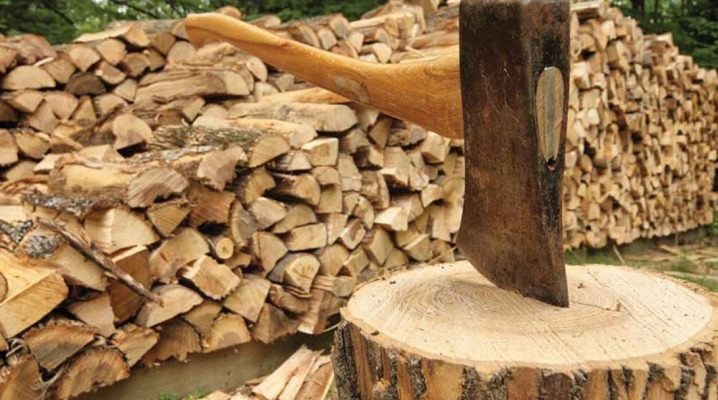
Chopping firewood is a process that will seem difficult to beginners. But there are no special secrets in this matter, you just need to prepare the site, know what is the best tool to work with, and master the technique of harvesting firewood. In the article we will tell you how to prick correctly, what tools you will need for this, and what problems may arise during the work.


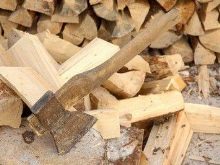
Necessary accessories
Chopping firewood begins with preparing the place for work. Choose an area with enough space for the logs to spread. It should be a safe place away (or fenced off) from animals and other people. There should be free space above the head so that there is enough room for the ax to swing freely.
It is better to chop wood on compacted soil or on a concrete surface. For convenience, a special device is prepared in the form of a wide hemp or a stable log up to a knee in order to put knots on it for cutting.
The collection of firewood is divided into "felling" and "splitting". For the first process, an ordinary sharp ax is also suitable, with which you can remove knots or cut down a small tree. But for splitting, get a sledgehammer-cleaver. This tool has a dull blade and splits logs.
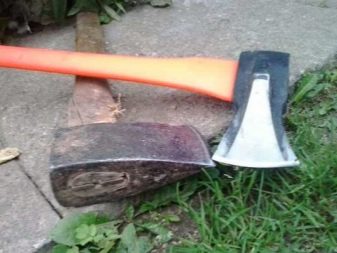
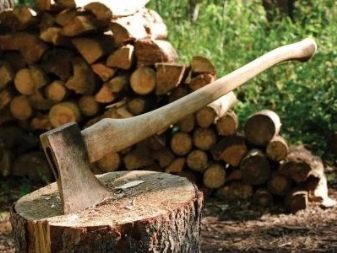
With such a sledgehammer, even impressive stumps can be cracked, but for this you have to apply enough force. Today there are lightweight modifications of such a tool that can split wood, for example, "eared" cleavers.
They are easier to swing, but the blow comes out not so powerful.
Experienced summer residents, as a rule, have all types of tools, and depending on the thickness of the firewood, one or another tool is used. Large and branched specimens are processed with a heavier tool.

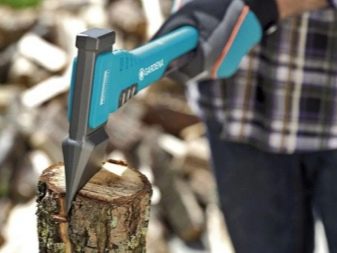
When choosing a cleaver, the basic rule is that it is comfortable to grip and “lies” securely in the hand. For breaking down thick and voluminous blocks, it is better to take a tool with a long handle, and a half-meter long handle is suitable for splitting small stumps.
An experienced owner checks the handle for integrity and stability before splitting.
To ensure the reliability of fixing such a handle, a steel wedge is driven into the end of the wood. Everything must be carefully checked before starting work.
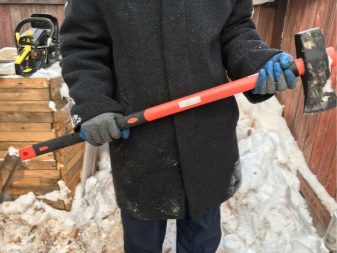
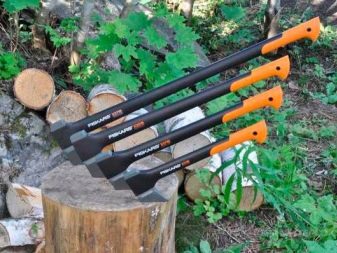
How to chop wood correctly?
Chopping wood is easier when everything is prepared beforehand. Remember that dry or frozen logs split quite easily and quickly, but you will have to tinker with freshly cut wood. It is better to dry fresh saw cut before putting them further into work.
Select the size of the handle for easy handling with the hatchet. Set the log in a stable position, try to get the ax between the crevices. But first, take the correct position: place your feet shoulder-width apart, and stand in the middle of the deck (so that after swinging the cleaver touches the center of the hemp).
In the process, both hands are involved: with the left they take the bend of the handle, and with the right they grab the ax handle almost at the tip. Raising the weapon up, the arms are straightened and squatted a little. A blow to the cleft is applied with acceleration, moving the right hand slightly forward.
It is not always possible to split the log right away. In this case, shaking up and down, remove the sledgehammer. The second hit falls in the same place as the first. The hatchet is raised quite high above the head and with force is lowered sharply.
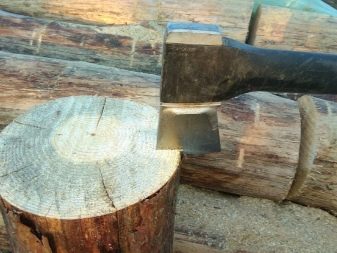

The action is repeated until the wood splits in two. Use the three-hitting technique to split sturdy blocks of wood:
- aim for the very center the first time;
- in the second, hit the far place;
- with the third blow, "finish off" a strong stump on the near part.
Bulky stumps are split in the following way: small logs begin to “pluck off” from the edges, moving gradually to the central part of the wood. Sometimes an ax stuck in a stump is used as a wedge, striking it with a sledgehammer.
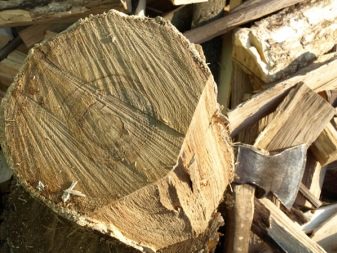
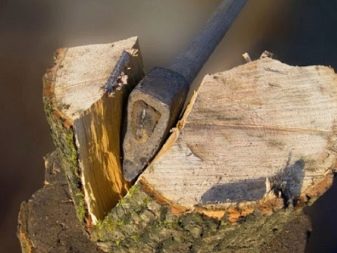
If the ax is stuck in a small log, then it is lifted, turned over and hit with the butt down on the deck - this is usually easy for craftsmen to cope with. For beginners, it is better not to risk it and extract the ax using the methods described above.
When chopping wood, there is no need to rush; every action must be deliberate. If not from the first time, then from the second or third time the experience of how to do it correctly and better will begin to come. Over time, on an intuitive level, you will begin to understand how hard you need to hit the hemp in order to split it.
You can also chop wood in a mechanized way. To do this, you need an apparatus that runs on electricity. Such a unit is either bought or assembled on its own - for craftsmen it's as easy as shelling pears. It facilitates the splitting process, does not require a lot of diligence and effort from the lumberjack, but compliance with safety rules is an important condition in any case.
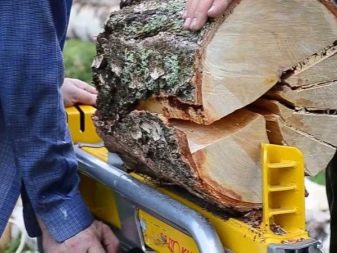
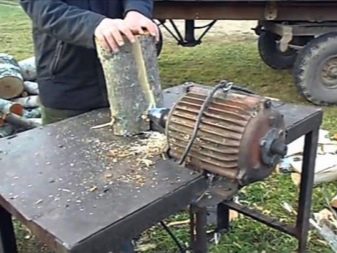
Safety engineering
Chopping firewood can be a fun and even gambling activity, just do not forget about the observance of safety precautions. Precautions are needed first of all so as not to harm other people or animals - during the chopping of firewood, chips fly all the time.
Ask others to leave the site where you plan to work. If you plan on stabbing in a barn or under a canopy, then the height of the ceiling should match your upward swing (arm height + ax length).
Do not neglect personal protective equipment: work with gloves (you can wear durable non-slip gloves); protective goggles on the eyes, tight clothing and sturdy shoes with stable soles - all that will protect against corns, other unwanted injuries on the body, protect eyesight.
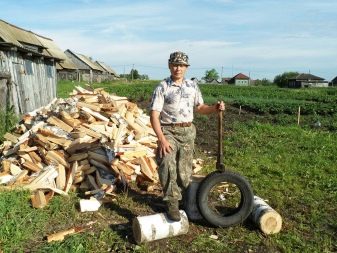
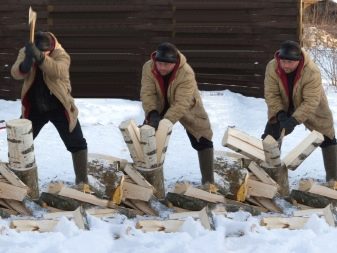
To be sure that the handle is securely fixed, soak the tip in water the day before, so that some of the wood is also wet (you can do this "bath" for several days). The handle swollen at the bottom will tightly fix the metal sheet.
This method is used only for a wooden handle. For plastic or metal, such a procedure is useless - before work, in this case, carefully examine the instrument. If a defect is found, the situation is manually corrected or the structure is replaced.
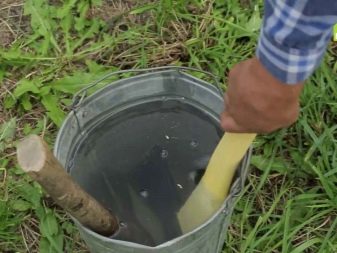
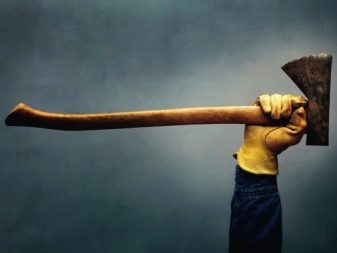
Possible problems
It is better to prepare the logs in advance, especially if you have to chop large stumps. It is recommended to dry fresh wood at first, otherwise you will have to mess around longer: raw wood is not so pliable than dried or slightly frozen wood.
In order not to quickly get tired and not lose strength, do not chop with wide swings, it is better to lower the ax sharply using the weight of the weapon. You do not need to split the knot with a cleaver, it can either get stuck tightly or fly off. It is best to use a sharp ax to remove knots.
It is not recommended to chop wood near a window, cars and other obstacles that may "suffer" from chips or wood itself.
The pieces of wood can fly out from under the cleaver quite far, so there should be free space at least within a radius of three meters from the splitting point.
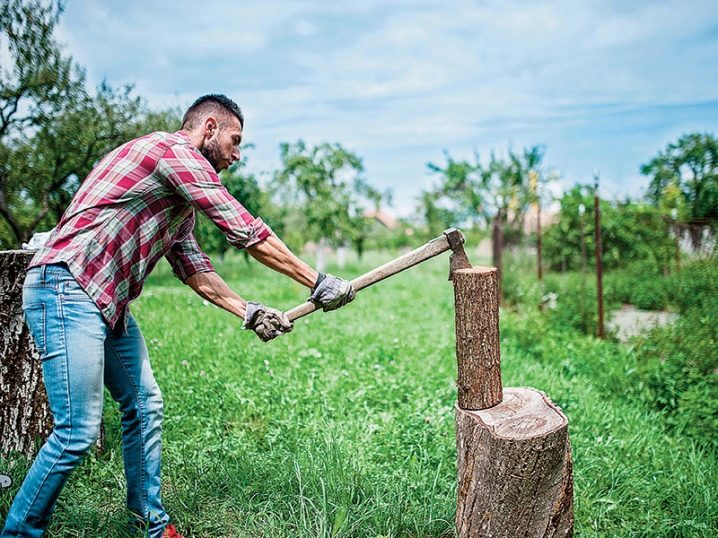
Inexperienced lumberjacks can be guided by long distances. Beginners need to follow another rule for personal safety: strictly spread their feet shoulder-width apart. In this position, if the ax jumps out of the hands, it will not hurt the legs.
The ax can get stuck in the log - this is another problem that the lumberjack can face. In such a situation, you will need a splitting wedge, which, by striking, is driven in next to the stuck instrument. Usually this technique "saves" the implement, but sometimes you have to take a saw to retrieve it.
If firewood is chopped on a mechanical device, it is not necessary to work with gloves: they can accidentally be "caught" by the sharp part. To avoid accidents, it is best to wear gloves that fit snugly around your fingers. The same applies to clothing: it should not be "wide open", but fastened on.

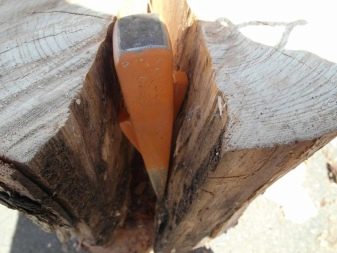
When you first start chopping logs, do not rush to prepare a lot of firewood at once. A quantitative record in this case is inappropriate, you may be overcome by muscle pain and bloody calluses on your hands - you need to get used to the process gradually.
By the way, chopped firewood is not recommended to be immediately folded into a woodpile. They should be given time to dry (even if they were not damp when splitting). On a bright sunny day, they are left directly in the open air, if the weather deteriorates, it is better to cover it with a tarp.
And so that an unexpected downpour does not catch by surprise, it is better to immediately leave the chopped wood under a canopy for several days, and then put it in a woodpile - so they can lie for a rather long period without loss of quality.
If completely fresh firewood was chopped or it was not possible to dry it, it is better to use such branches only after a year., otherwise they will light up poorly, and they will smolder more than burn, and it will be difficult to achieve the desired temperature.
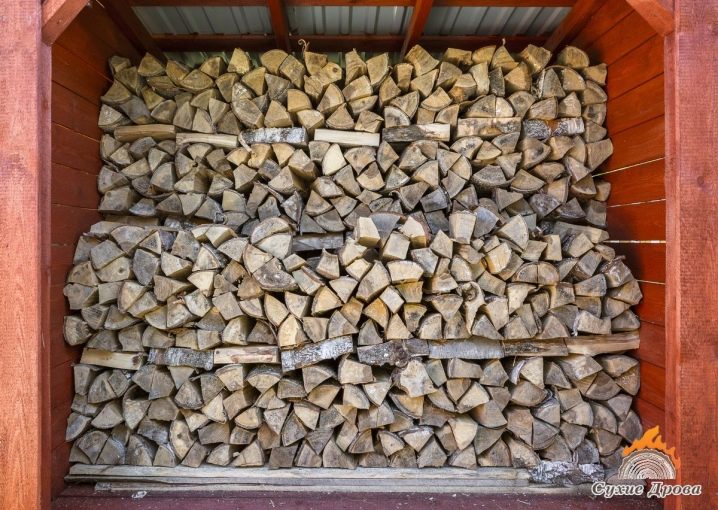













The comment was sent successfully.